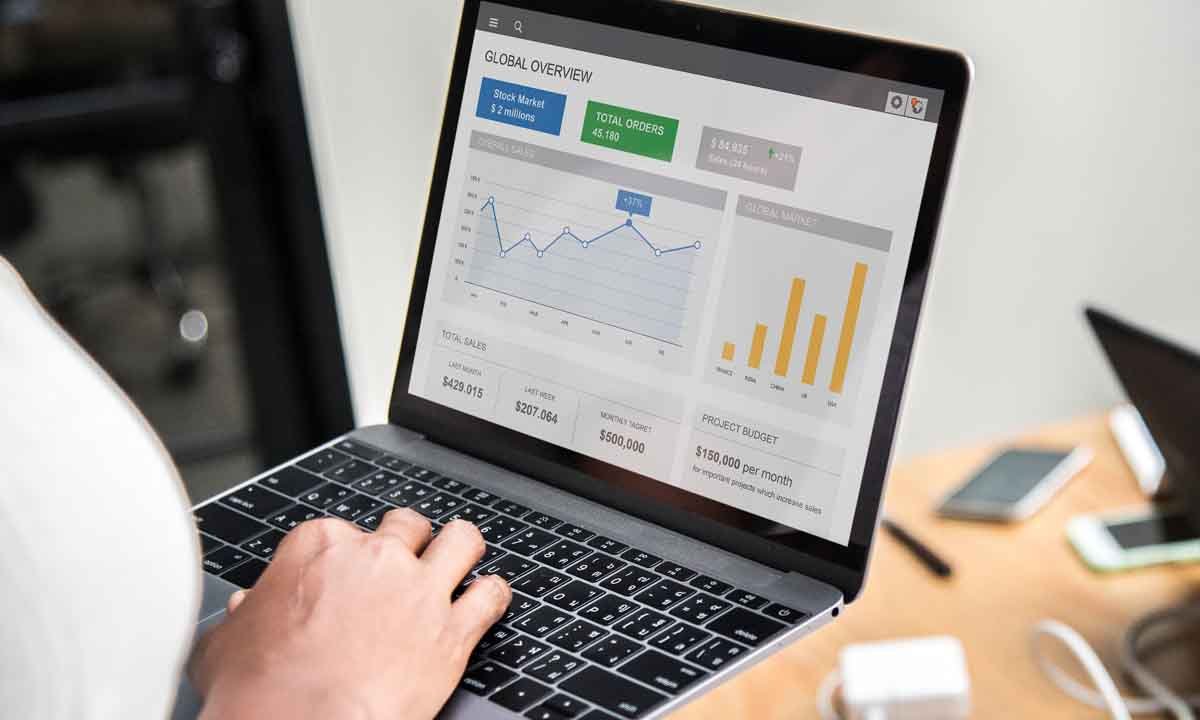You’ve probably heard that the Google algorithm is changing continuously and it uses more than 200 ranking factors to rank the relevant webpage based on the user’s query.
Wondering what Google SEO ranking factors will work in 2021?
Just relax! Here is a complete list of SEO ranking factors that Google uses in its algorithm.
However, the factors listed here are mixed of proven, controversial, and conjecture.
Let’s read.
Oh! Just a minute! Before revealing the Google SEO ranking factors, I just want to disclose that the ranking factors are divided into so many categories include domain factors, page-level factors, site-level factors, backlink factors, user interaction, social and brand signals.
On-Page Factors:
The first thing you should do is optimizing your page with some of the page optimization factors. Why? Optimized page content sends relevancy signals and affects the search engine visibility of your page. Like on-page factors, off-page, and some other factors also matter in SEO. Let’s see the most important Google SEO ranking factors in a detailed manner.
Keywords matter:
Do you have any idea about this? Alright! Let’s read here. Keywords play a major role when it comes to Google ranking factor, meaning you should implement your primary keyword in appropriate places to send relevancy signals to the Google bot. On the other hand, keyword research is the successful part of SEO. Before starting SEO for your website, you should research keywords related to your business. There are tools that you can use to find relevant keywords for your website. Not only the successful part of SEO lies in keyword research; it goes on where the keyword implementation will be on your webpage.
They are as follows,
Keywords in Title:
Before learning about keywords in the title tag, it’s quite important to know what the title tag is. The title tag is nothing but the title of the webpage. It normally appears on the Google SERPs to describe what the page content is about. Hence, the title should be catchy and related to the webpage so it will get more clicks. When comparing to other tags, the title tag is the most important one to focus on as it sends the relevancy signal to the search engines the most. Make sure that you’ve placed the keyword at the start of the title tag. This is because keywords placed at the start of the title works better than the keyword at the end of the tag.
Keywords in Meta:
This is another relevancy signal to the Google search engine. Including your keyword in the Meta description tag acts as a great relevancy signal and as well as it describes what the page is about. But, you should write your Meta in a more attractive way to gain user clicks.
Keywords in the H1 tag:
Include your keyword in the H1 tag as it’s the most important relevancy factor as it acts as a description of the content. Hence, your title should be attractive and make users click on that. Be sure that you’re page has only one H1 tag.
Optimize keywords in the page content:
After optimizing your keywords in Title, Meta, and H1, it’s time to place them in the page content. While writing your content, sprinkle the keywords naturally as it also sends the relevancy signal to the Google search engines.
Internal linking:
Internal links also play a crucial role in ranking a page as it gives an idea about the structure of your website to the Google. Hence, it can able to find the hierarchy of your site. Another thing to note is you should use the proper anchor text while linking pages internally. In this way, you can add a little boost to your SEO.
Direct Website Visits:
You can come to know from the name itself about direct website visits. As the name describes, direct website visits mean visiting your website from any of the sources include bookmarks, browser history, and direct URL of your site. In other words, the direct visits are a visit that comes without the help of any referral sources such as search engines, blogs, other websites, social media (Facebook, Twitter, etc.) and much more. It also acts a great source to direct users/visitors to your website. Oftentimes, the direct traffic will be calculated from your company’s customers. To prevent those visits into an account, filter out those internal IP addresses.
Do you want me to explain why direct website visits are important in detail? Let’s see why! The first thing is brand recognition. If a user types your website URL into their browser and visits your website, then this is an indication of your authority on the particular subject. The best way to promote your website is by providing valuable content to the users. This is because if the content is worth reading, then everyone will love to read it. If everyone loves to read your content, then Google loves you and ranks you at the top of the search engines.
Remember the quote “Google only loves you when everyone loves you first”. Hence, gain authority and make users recognize your brand by providing valuable content.
Time on Site:
Time on site is nothing but how much time a user spends on your site. If the user spends much time on your webpage or site as it will help Google to know how useful the particular page or site is. How long a user stays on a website is also considered the major SEO ranking factor. All in all, the time on site is an indication factor to Google that how much your site is worth to the users.
Here is how time-on-site works,
In order to know the exact time that the users spend on your site, you should know how it’s calculated by the web analytics software.
For example, if a user visits a webpage on your site and performs any actions within their first visit, then it is recorded in one session. This is because the web analytics tool has some rules to calculate these metrics. Generally, the session gap is 30 minutes in an analytics tool. So, if you open a webpage and went to the meeting, then returned to click a link on that page after 30 minutes; it’s recorded as a new visit and calculated in a new session.
If you want your user to stay on your site for more than a minute, then you should provide some valuable content to them. This is because the time on site is fairly related to the bounce rate. If you a visitor to your site spend more time, then there is a chance to see reductions in the bounce rate.
However, it’s best to have an average session duration of nearly 53 seconds for your website from organic search traffic.
Pages Per session:
Before learning pages per session, you should be aware of what the session is. A session is nothing but a group of interactions that a user made on your site within a specified time duration. In a single session, the user can do anything such as completing any actions, viewing multiple pages, e-commerce transactions, social interactions, and so on.
Hope, now you come to know what the pages per session are. It’s just a measurement that shows how many pages that a visitor loads/visits within a single visit to your website.
Through this measurement, you can also know how the pages on your site are engaging to the users. If the pages per session are more, then the visitors to your site are more engaged and vice versa. Hence, have a hawk-eye on the pages of your website and write content that is engaging the users.
Bounce Rate:
Bounce rate is the most important factor that you should concentrate on more. What is it? It’s is a measurement that indicates how many visitors leave your page without loading any page on your website. The higher the bounce rate, the lower the page quality. Hence, you should pay special attention to reduce the bounce rate of your page by adding some useful information to the page. Usually, the bounce rate will increase if the user to your website didn’t find what they’re looking for.
What is the best bounce rate for a website? If a bounce rate for your website is in the range of 26% to 40%, then it’s good. More than 40% is average and if it exceeds more than 70%, then you should analyze what is wrong with your website and fix it for a better bounce rate.
Bounce rate = Total number of bounces on the page within a given time period/total number of entrances on the page (within the same time period)
How to reduce the bounce rate? One of the best ways to reduce the bounce rate of your website is to create a landing page that satisfies the user’s query.
Referring Domains:
Referring domains are domains where the links are coming from to your website. Are referring domains matter to SEO? So, what backlink is? A backlink is a link from another website to your site.
For example, assume an E-commerce Store “A” and you’re purchasing items from that store.
Here, “A” is referring the domain, and “items purchased” are links.
When it comes to link building to your site, it takes time. But, it always worth your time as quality links send trust to your site. But, the thing is you should focus on how many links pointing to your site and as well as the referring domains. The ratio of referring domains to backlinks is important in SEO ranking factors.
Consider the following scenario,
If your website is having more links and fewer referring domains, then your backlink profile is quite weak.
Assume “A” is your website and the referring domains to “A” is 100, but the links to pointing to “A” is 1000, then it will negatively impact and it’s a bad thing in the eyes of Google.
Google is punishing websites that are getting links through a paid linking scheme. Hence, if your site is having a high number of backlinks and low referring domains, then it’s an indication that the links are from a paid linking scheme so-called private blog networks.
If your website is linked to the de-indexed network, then there may be chances for effect in your rankings. Hence, stay away from paid blog networks and try to build natural links to your site.
Content:
You might have heard that the phrase “Content is King” everywhere. Undoubtedly, content is the supreme ranking factor in Google’s algorithm. The point is that quality and engaging content plays a major role. Ensure that your content is well-worthy to read and share. Besides, make sure that your content is free from duplicate issues. This is because Google loves quality content not duplicate one. If you do want to hit by Google Panda, then say no to low-quality content. Google introduced its algorithm named Google Panda to filter out the sites with thin content.
Content-Length:
Does content length matter in SEO? This is a debating topic as most people say “long-form content plays well than a shorter one and vice versa”. While writing content, you should think from user’s side. Most of the internet surfers won’t read much and some might read more. But, studies have shown that longer content ranks well in the Google SERPs. Hence, analyze what your target audiences want from your site and which form of content plays a good role. Based on that, implement a trial and error method and write content for your website that is liked by the users to get more shares and clicks.
HTTPS:
Is Google started to give a ranking boost to the sites having SSL certificate? Let’s see. These days, sites without HTTPS losing their rankings and are ignored by Google. Why should you switch to HTTPS? The reason is that Google is giving more weightage to the sites with a secure connection.
What is called HTTPS? HTTPS is the Hypertext Transfer Protocol Secure is the secure version of the HTTP protocol. This means the information transferred between a website and a browser is encrypted. Want to stay away from a Non-secure warning from Google? If so, then switching to HTTPS is the best choice ever.
Once you’ve decided to implement HTTPS on your site, you should pay special attention as it may affect your ranking as well. If you’re going to start a new site, then buying the SSL certificate at first is good. In case, if you’re going to buy the SSL certificate after few months from the start of the website, then using 301 permanent redirects will help to maximize SEO.
Keyword Density:
Does keyword density matters in SEO? What is the ideal percentage of keyword density? Well, there is no optimal keyword density that you should follow. You can insert your primary keyword in your content and as well sprinkle LSI keywords to make your page relevant to the query. Keyword stuffing is not a good technique to do as Google is penalizing the sites with keyword-stuffed pages. Hence, it’s best to write content by sprinkling keywords naturally. However, there is a formula to calculate the keyword density. They are as follows,
Keyword Density = Number of times you repeated a specific keyword (Nkr)/ total number of words in the text (Tkn) * 100
Image optimization:
As we know that “Image is better than thousand words”, so, it’s best to use images and videos on your website. Besides, it’s good to optimize the images on your page. Optimizing images on your page sends the relevancy signals to Google through the alt text, caption, and so on. Optimizing the images on your webpage with an alt tag helps both the users and search engines to know what the page is about. Moreover, there may be chances for ranking in image search. And, it will be helpful for the user to know about the image if they are using text-only browsers or their internet connection is slow.
Mobile-friendly Version:
Nowadays, mobile users are increasing gradually so it’s quite important to focus on mobile responsive design. Google gives a little boost to those sites having the mobile responsive design of their site. Is your site mobile-friendly? No, then it’s time to optimize your site for mobile users to get a boost from Google. A recent study shows that the sites ranking in top positions having a mobile-friendly version of their site.
The freshness of the content:
Google loves fresh content so it’s good to update your content on your website regularly. Try to give the most useful information to the users in the way they want to attract them and to make your content go viral. Make sure that your content is unique and informative to the users.
XML Sitemap:
However, like how HTML sitemap is useful to the users, the XML sitemap aids the search engines to know the page URLs of your site. Hence, if your website has an XML sitemap, then it will be good for search engines like Google to improve the visibility of your website.
Page Speed:
Page Speed is another important factor in the eyes of Google. If your site takes more time to load, then there may be chances to affect your rankings negatively. Check the page speed of your website using the Page Speed Insights tool and know the area you should focus on. Assume you as a user and you typed a URL in your browser. The page is taking more time to load, than what you will do; definitely, you’ll close and go to another website. Do you want your users to do not visit your site? If no, then improve the page speed of your site and boost your rankings in Google SERPs.
Social Media Signals:
Studies have shown that a strong signal from social media is positively impacting on search engine rankings of your website. Hence, share link-worthy content across various social media platforms and build a strong link building profile to your site.
Total Backlinks:
Still, the backlinks are being an important ranking factor in the eyes of Google. But, you should not focus on the quantity as Google does not love the site which is having more low-quality backlinks. Hence, it’s good to build a large number of quality links over quantity to build trust in your sites. Moreover, while getting links from other sites, there are so many factors to consider which include domain authority, page authority, and age of linking domain, and so on.
Total referring IPs:
Like referring domains, the referring IPs also matters in SEO. This is because a single website can have multiple IP addresses. For example, if “A” is your site and it’s getting backlinks from the website named “B”, then the number of referring domains is 1 but there may be more referring IPs. As we discussed before, there is a correlation between the number of backlinks and the number of referring domains. If a site is getting more links from the same website, then it will impact the site’s rankings negatively.
Total follow backlinks:
Alright! We all know what the backlinks are? But, what the total follow backlinks mean? Let’s read. You’ve probably heard that a combination of both no-follow and do-follow links works well in the eyes of Google. However, the links with the “follow” attribute will pass link juice. On the other hand, links with the “no-follow” attribute do not pass any link juice. Hence, it’s always best to keep do-follow links on your website in a good number.
Total anchors:
As we all know that, the anchor text is the clickable text in the hyperlink. Hence, it’s best to use a good number of anchor text in your article. There are different types of anchor text are there includes an exact match, naked URL, generic, partial match, and much more.
These are some of the most important ranking factors you should focus on while trying to rank your pages on Google SERPs.













